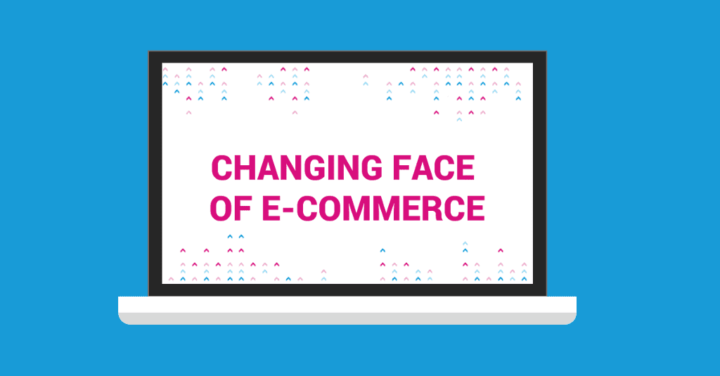
At Shopsys we have been working tirelessly for the past 14 years to build successful e-commerce sites for our clients, so we have seen how the evolution of technology has constantly been reshaping the way in which we think about and approach e-commerce. In an industry which relies so heavily on staying current and connected, it’s imperative for any company to have at their disposal the means to understand and cope with the shifting landscape of online business. But since the birth of e-commerce 27 years ago, there are a few things which have remained constant — namely the different fronts of competition.
Where leading e-commerce companies are concerned, this boils down to three criteria that play a significant role in how a company chooses to attract customers, plan their marketing campaigns, and stay ahead of the curve: product range, logistics, and price range. At the same time, customers have come to expect a high degree of quality across all three of these dimensions, to the point it has become a form of standardized practice.
Product Range
A successful company needs to have a wide selection of products to choose from. Variety, as they say, is the spice of life. Online stores often have huge stocks, and indeed the credibility and popularity of a store is based at least in part by the diversity of their product range.
Logistics
Additionally, all the leading e-commerce companies already have in place an efficient and robust method of production and/or distribution. This includes being able to accommodate some of the more common shipping practices. For example, next-day delivery — which was once a luxury — is now widespread and common, and customers now predict their vendors will be able to supply such a service as just another part of their business model.
Prices
And lastly, it always comes down to cost. Being able to offer products at a price which is fair and affordable but still manages to achieve a good ROI is at the crux of any e-commerce store. More and more, online retailers have come to realize that low margins can’t make up for this lack of return, and as a result many companies no longer use these kinds of incentives in their advertising as a selling point.
In essence, taking these factors for granted has become the norm. The struggle, then, is in looking beyond these standardized expectations and exploring new territory in order to increase one’s competitive edge.
Where is the competition?
The fact of the matter is, e-commerce is quickly becoming a dominant force, and each year the industry expands as more investors and companies channel money into their ventures. The idea of ‘survival of the fittest’ has swung away from prices and products, and more towards identifying areas where you can stand out or make an impact. It shouldn’t come as any surprise, then, that entrepreneurs have had to go back to the basics and are adopting more client-focused approaches.
Customer loyalty is the new battleground, which means being able to connect with your target demographic and earn both their trust and respect. In other words, creating a brand which is able to speak to new and potential (as well as pre-existing) customers, and which becomes the symbol of your company. A brand communicates not only a guarantee of integrity and fairness, but it is also the vehicle of a company’s philosophy — how they see the world, how they see their customers, and most importantly what value they place on the customer relationship.
The Customer’s Journey
From this perspective, a brand is more than just a product or a logo. It encompasses the entire interaction of a company with its customers, from the initial ‘hook’ of your advertisement which draws them in through to the final transaction and decision to purchase. But for some reason, it has taken online retailers a long time to appreciate and acknowledge the importance of this process, and today many conferences and seminar still emphasize things like conversion rates over customer experience.
Understanding each step of this journey is crucial to understanding the consumer mindset, and being able to break down the steps is what allows a vendor to easily localize in which areas they are succeeding in meeting a customer’s needs and where they need to improve. Those in e-commerce have anticipated a need to move into the fields of software development in order to supplement these demands. As a result, we are seeing a rising trend of e-commerce companies assimilating more technology-based roles in order to stay on top.
By like conventional e-commerce, there is still pressure to stay current. That means being able to provide new and better features, monthly updates and upgrades, and a strong social media presence and ability to keep your customers in the loop about new changes. At the same time, this has also bred a lot of innovation — by way of example, the company Uber doesn’t own a single one of its cars, and the successful Airbnb franchise doesn’t own a single one of their accommodations. The common denominator is their reliance on a shifting and flexible scope of new technologies.
The Hurdles
From a software perspective, then, there are a number of obstacles to staying current and staying competitive.
- Technical Debt — developers have their hands full as it is trying to come up with new features in order to streamline the customer’s journey and improve upon pre-existing systems. If we think about the extra time that is spent repairing and maintaining software and sites, this can accumulate very quickly and become a deficit for e-commerce sites. Therefore, eliminating technical debt is at the forefront of the Shopsys Framework so that more energy can be devoted to innovation.
- Vendor Lock — on top of technical debt, vendor lock can set back a company even quicker. When the vendor or proprietor of a piece of software is the only person who can access, understand, and fix problems that arise, the speed and efficiency in which issues are dealt with becomes contingent upon an outside party.
- Built From Scratch — another big time-waster is trying to build your site from scratch; not only is this a lengthy process, but it’s susceptible to the same quirks and problems that any new piece of software encounters; instead, it makes a lot more sense to rely on pre-existing templates and code which is tested and true.
Preventing Debt
This is where Shopsys Framework aims to help the most — by tackling the issue of debt and strategizing ways to counter it, wherever it might show up. The 14 years we’ve spent building hundreds sites and getting to know the terrain means we’re aware of where companies experience hiccups and the specific things which can help increase productivity and help a site run smoothly.
- Specially tailored to work with an Internal or External team
- Innovative architecture, testing methodology, and automatic source code quality control
- Easy to use and understand, even for junior developers
- Open source, meaning you don’t have to worry about vendor lock
To really succeed in e-commerce nowadays means being able to adapt to the changing face of online business by becoming a tech company, and rising to the challenge of meeting the needs of customers.
If software development is the new battleground, then developing new features, responding to clients, and constantly modifying are the weapons which can help you pull ahead competitively. And at Shopsys Framework, we are constantly working to help you win. We are very excited about our upcoming launch and if you are interested in taking part in a closed beta we would love to have you!
This article was written on the basis of my presentation at dmexco 2017.
Čtěte také- Introducing the Shopsys Platform: The Solution for E-Shops that Refuse to Compromise
- EMOS Case Study: B2B and B2C Ecommerce Platforms Tailored For Electronics Category
- The e-commerce market consolidation will also affect agencies developing tailor-made online stores
- Two new faces in Shopsys’ management board
- 5 Things To Consider When Adopting Ecommerce Platform From Mother Company



